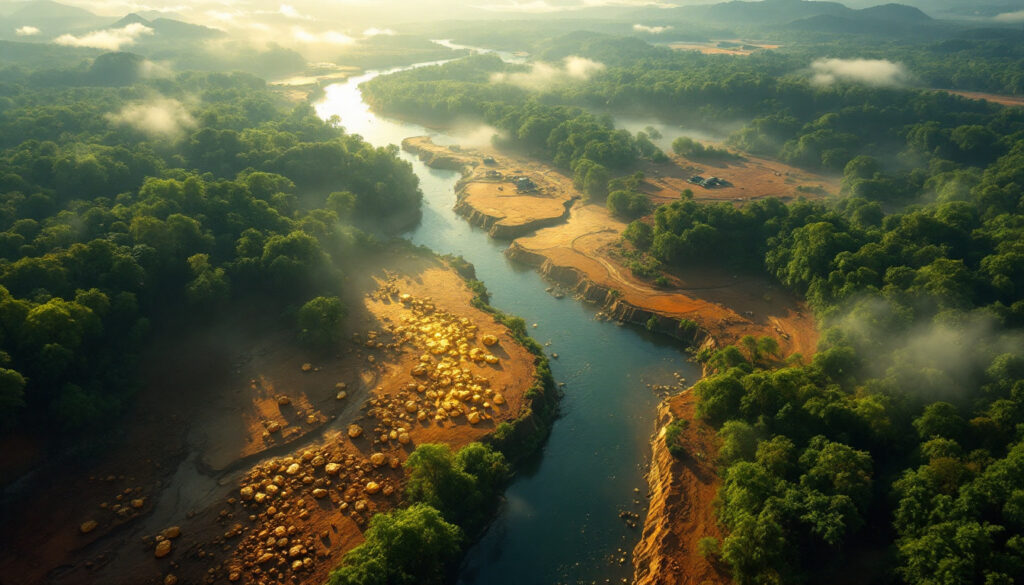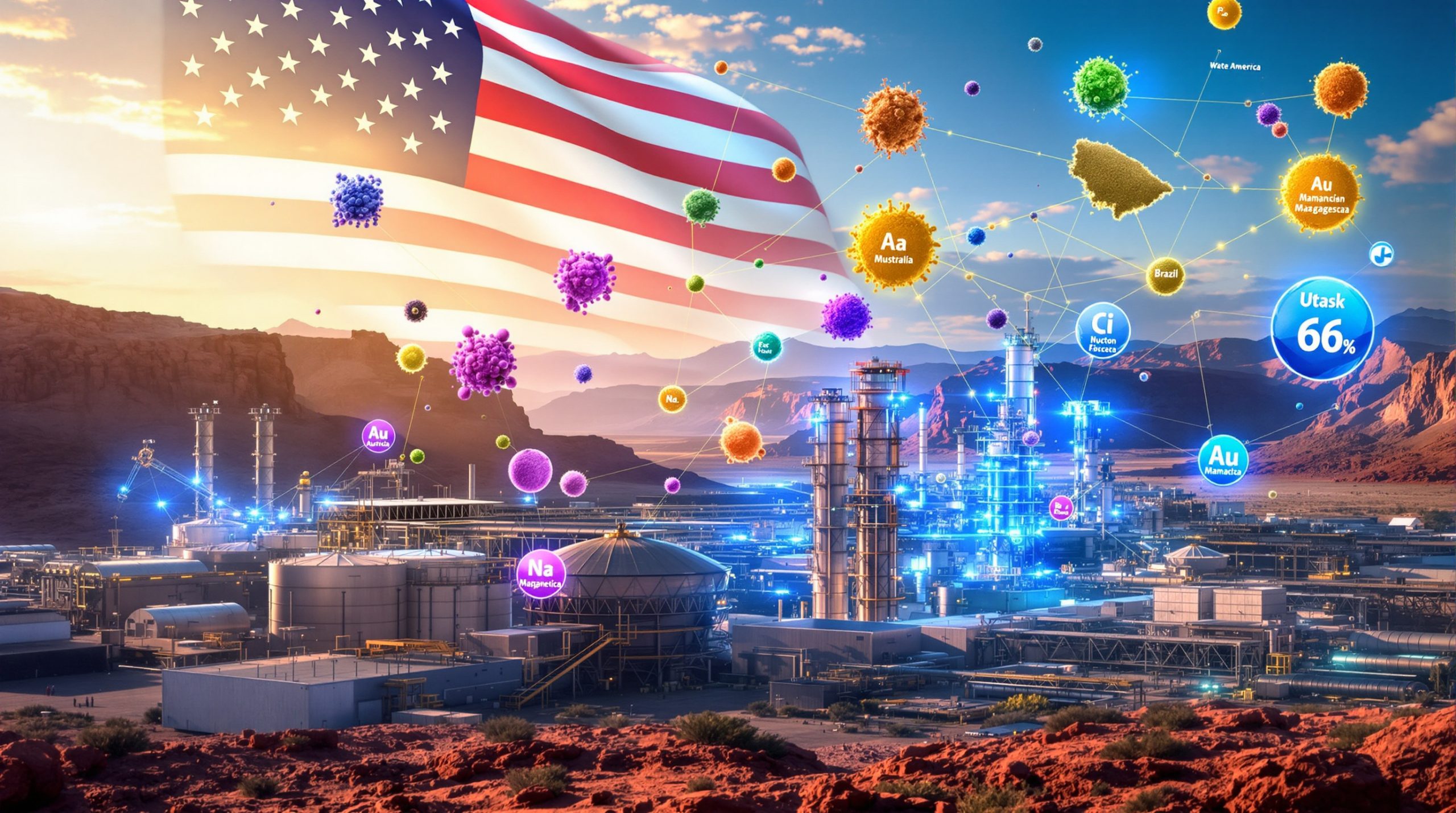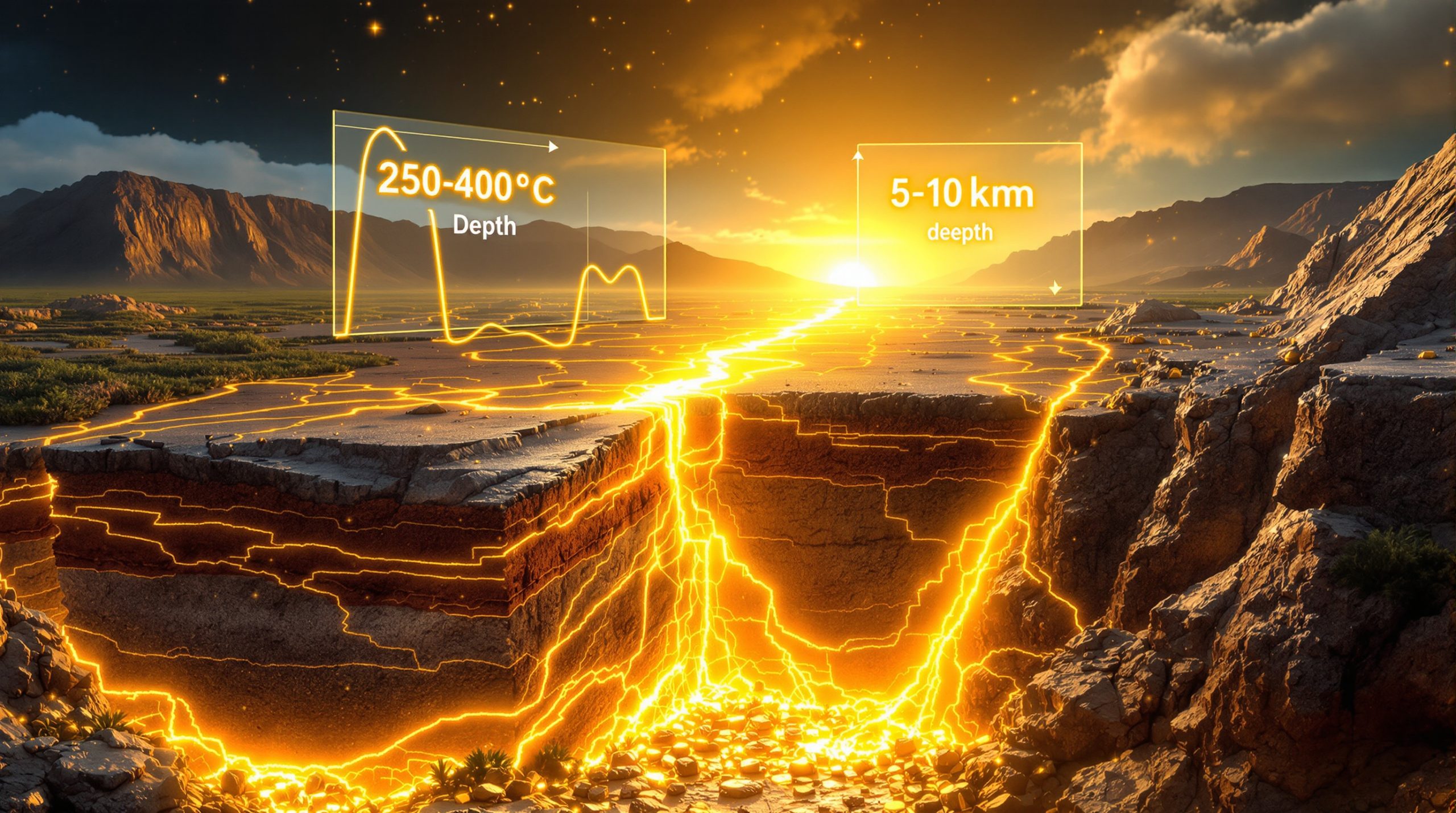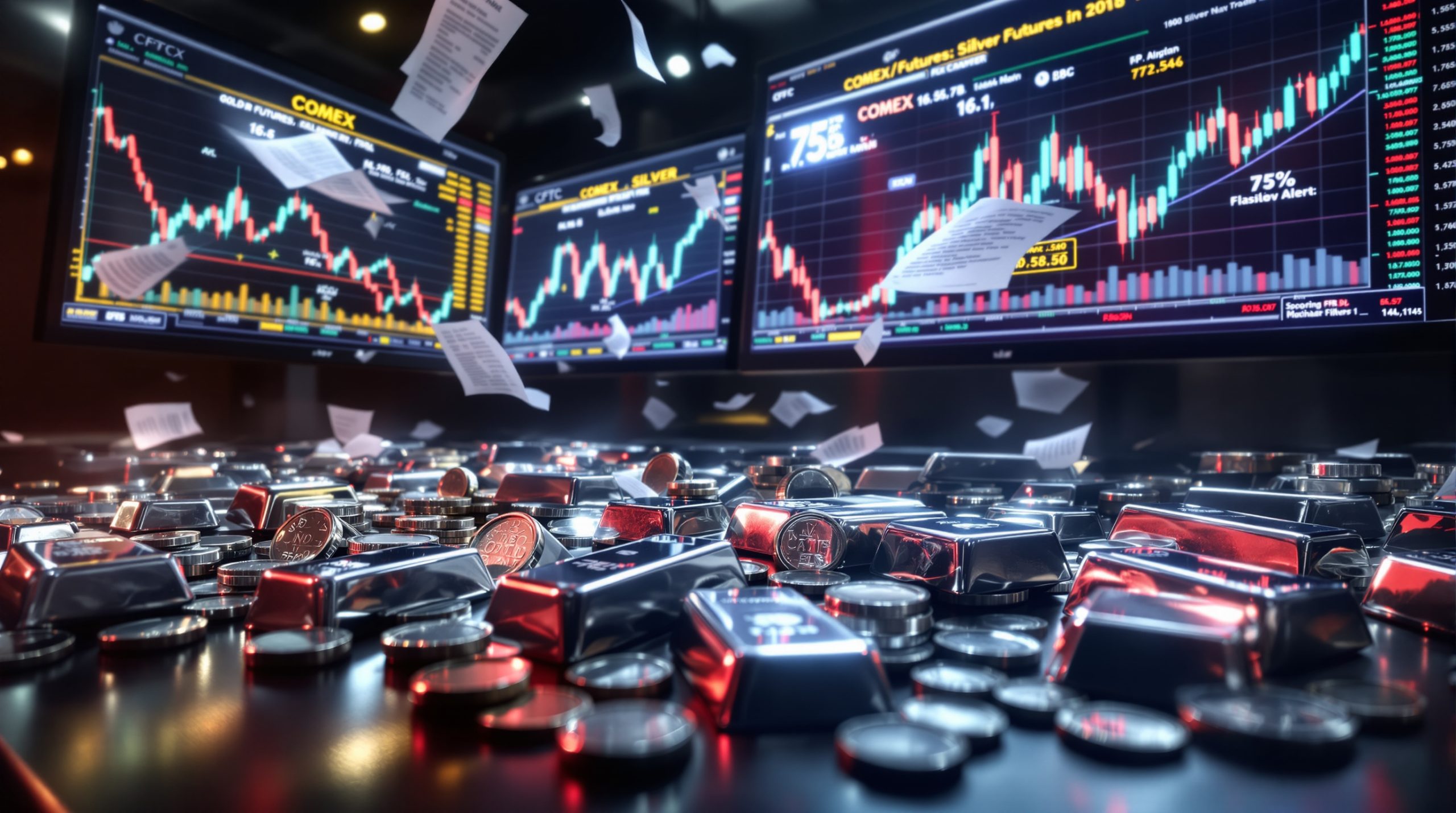What Natural Resources Does the Democratic Republic of Congo Have?
The Democratic Republic of Congo (DRC) is widely considered one of the world's richest countries in terms of natural resources, with an estimated $24 trillion worth of untapped mineral deposits. This vast wealth includes a diverse range of minerals and other natural resources that are crucial to global industries and technological development.
Recent geological surveys have revealed that the DRC's mineral wealth may be even greater than previously estimated, with new deposits being discovered in previously unexplored regions of the country. Dr. Alphonse Katanga, a prominent Congolese geologist, notes that "only about 30% of the country's subsurface has been properly mapped using modern techniques," suggesting significant undiscovered potential.
The Mineral Wealth of the DRC
Strategic Minerals and Metals
The DRC possesses an extraordinary concentration of valuable minerals:
-
Cobalt: Controls 70% of global reserves, making it the world's largest producer. The Katanga region produces cobalt with average grades of 0.1-0.4%, significantly higher than global averages of 0.05-0.1%.
-
Coltan (Columbite-Tantalite): Holds 70% of the world's reserves, essential for electronics manufacturing. The eastern provinces contain coltan with tantalum content of 20-40%, considered premium-grade globally.
-
Copper: Contains approximately 10% of global reserves. The copper belt in Katanga produces ore with grades ranging from 3-5%, compared to the global average of 0.6-0.8%.
-
Diamonds: Possesses over 30% of the world's diamond reserves. The Mbuji-Mayi region is known for producing high-quality gem diamonds with exceptional clarity.
-
Gold: Significant deposits throughout the country with unusually high purity levels of 22-24 karats in the Ituri region.
-
Tin: Substantial reserves, particularly in the eastern regions, with cassiterite concentrations of up to 75%.
-
Tungsten: Important deposits used in industrial applications, with some areas yielding ore containing 2-3% tungsten oxide, double the global average.
-
Zinc: Notable reserves contributing to industrial production, with concentrations reaching up to 10% in some areas.
Critical Minerals for the Green Energy Transition
The DRC's mineral wealth is particularly significant for renewable energy and technology:
-
Lithium: Emerging deposits in the Manono region show exceptionally high lithium oxide concentrations of 1.5-2%, placing them among the highest-grade hard rock lithium deposits globally.
-
Rare Earth Elements: Contains deposits of these critical materials for high-tech applications, with particularly notable concentrations of neodymium and praseodymium crucial for permanent magnets.
-
Manganese: Important for steel production and battery technology, with the DRC's reserves showing exceptional purity levels above 50% manganese content.
According to mining expert Jean-Pierre Okenda, "The DRC's mineral profile positions it as the single most important country for the global transition to clean energy. Without Congolese cobalt and copper, the electric vehicle revolution would grind to a halt." The country's mining's pivotal role in the clean energy transition cannot be overstated, as these minerals form the backbone of modern renewable technologies.
How Important is Mining to the DRC's Economy?
Economic Contribution
Mining accounts for approximately 90% of the country's export revenues (as of 2005 data). More recent assessments from the Extractive Industries Transparency Initiative suggest this figure has increased to 95% as of 2022.
The sector contributes significantly to the national GDP, estimated between 17-22%, though unofficial economic activity suggests the real contribution could be closer to 30%.
Mining provides employment for hundreds of thousands of Congolese citizens directly, with indirect employment estimated at over 2 million people across related sectors. However, addressing critical mineral shortages for clean energy remains a challenge despite the country's vast reserves.
Industrial vs. Artisanal Mining
-
Industrial Mining: Highly mechanized operations, particularly in Katanga Province, employ approximately 75,000 people directly. These operations typically extract ore at depths of 300-1,200 meters using sophisticated equipment worth over $500 million per major mine site.
-
Artisanal Mining: Employs an estimated 2 million people in small-scale operations, often in dangerous conditions. Miners typically work at depths of 5-30 meters using hand tools, earning $1-5 per day depending on findings.
-
Diamond Production: A significant portion is artisanal, with experts believing substantial amounts are smuggled out of the country. Industry insiders estimate that up to 40% of diamond production goes unrecorded, representing a loss of approximately $450 million annually in potential government revenue.
Mining economist Claude Kabemba observes, "The DRC's mining sector operates as two parallel economies – a formal industrial sector dominated by multinational corporations, and an informal artisanal sector that supports millions of livelihoods but remains largely unregulated and exploitative."
Why Hasn't the DRC's Mineral Wealth Translated to Economic Prosperity?
Economic Challenges
-
Resource Curse: Despite vast mineral wealth, the DRC remains one of the poorest countries globally, with a per capita GDP of approximately $580 as of 2022.
-
Price Volatility: Falling resource prices have contributed to economic decline since the mid-1980s. Cobalt prices, for example, have fluctuated between $30,000 and $95,000 per ton in the past five years alone.
-
Corruption: The country ranks low on the Corruption Perceptions Index. Recent investigations have uncovered mining royalties worth over $750 million that have disappeared from government accounts between 2018-2022.
-
Infrastructure Deficits: Poor transportation and energy infrastructure limit economic development. Only 19% of roads are paved, and electricity access stands at just 9% nationwide.
Governance Issues
-
Uncertain Legal Framework: Creates challenges for formal business operations. The mining code has been revised three times since 2002, creating regulatory uncertainty.
-
Informal Economy: Much economic activity, particularly in artisanal mining, remains outside official GDP data. Estimates suggest that informal mining contributes $1.5-2 billion annually that goes unrecorded.
-
Foreign Business Constraints: Corruption and infrastructure issues have led many foreign businesses to curtail operations. At least seven major mining companies have withdrawn from high-potential projects since 2015 due to these challenges.
Former Minister of Mines Martin Kabwelulu candidly admitted, "We have failed to transform our geological wealth into human development. The minerals leave our soil, but the benefits rarely reach our people." These mineral governance challenges and strategic insights remain critical issues for the country's development.
What Other Natural Resources Does the DRC Possess?
Hydropower Potential
The Congo River is the world's second-largest by volume, offering enormous hydropower potential. At its peak, the river discharges 41,000 cubic meters per second, with a constant flow that makes it ideal for dependable electricity generation.
Estimates suggest the DRC could generate up to 100,000 MW of hydroelectric power, equivalent to roughly 13% of Africa's total electricity needs.
The Inga Dam project represents one of the world's largest potential hydropower developments. Grand Inga alone could generate 40,000 MW, more than twice the capacity of China's Three Gorges Dam.
Forest Resources
The DRC contains approximately 60% of the Congo Basin rainforest, covering over 1.5 million square kilometers.
This second-largest rainforest in the world after the Amazon is home to over 10,000 plant species, 1,000 bird species, and 400 mammal species, many found nowhere else on Earth.
Significant timber resources with both economic and ecological value. The sustainable timber industry could generate $2-3 billion annually if properly managed, according to forestry experts.
Agricultural Resources
Arable land with significant agricultural potential comprises approximately 80 million hectares, of which only 10% is currently utilized.
Diverse climatic zones suitable for various crops, including coffee, cocoa, palm oil, rubber, and staple foods. The DRC's agricultural potential could feed one billion people if fully developed.
Currently underutilized due to infrastructure and investment limitations. Average farm size remains small at 1.5 hectares, with limited mechanization and irrigation infrastructure.
Environmental scientist Dr. Grace Mutombo points out, "The DRC's biodiversity represents one of the world's most important carbon sinks, sequestering approximately 8% of global forest carbon. This ecological service is worth billions in climate mitigation value but remains uncompensated in global markets."
How Are International Organizations Involved in the DRC's Resource Sector?
Development Assistance
The World Bank granted the DRC up to $1.3 billion in assistance funds from 2007 to 2010, with approximately 40% directed toward resource governance and infrastructure development.
The IMF has worked with the Congolese government to develop economic plans, including a $1.5 billion extended credit facility approved in 2019 with specific benchmarks for mining sector transparency.
Various international NGOs focus on improving governance in the resource sector, with combined annual budgets exceeding $200 million dedicated to natural resource management programs.
Resource Governance Initiatives
The Extractive Industries Transparency Initiative (EITI) works to improve accountability. Since joining in 2007, the DRC has published 14 EITI reports disclosing over $7.2 billion in government revenues from extractive industries.
International certification schemes aim to address conflict minerals. The ICGLR Regional Certification Mechanism has certified 95% of 3T (tin, tungsten, tantalum) minerals from the DRC, though gold remains problematic with only 25% certified.
Foreign investment partnerships seek to develop resources more sustainably. The DRC-China Sicomines agreement, worth $6.2 billion, represents one of Africa's largest resource-for-infrastructure deals, though implementation has faced significant delays.
What is the Future Outlook for the DRC's Natural Resources?
Emerging Opportunities
-
Electric Vehicle Revolution: The DRC's cobalt reserves position it as "the Saudi Arabia of the electric vehicle age." Industry projections suggest cobalt demand will increase 300% by 2030, potentially generating $25-30 billion annually for the DRC.
-
Green Energy Transition: Critical minerals for renewable technologies create new market opportunities. The DRC could supply up to 70% of the critical minerals needed for global battery production through 2050.
-
Value Addition: Potential for developing local processing and manufacturing. Initial steps include the $80 million Entreprise Générale du Cobalt initiative to establish domestic refineries, potentially increasing export values by 30-40%.
Persistent Challenges
-
Governance Reform: Needed to ensure resources benefit the Congolese population. Anti-corruption measures could recover an estimated $1-1.5 billion annually in mining revenues currently lost to graft.
-
Infrastructure Development: Required to maximize resource potential. Energy deficits alone account for productivity losses estimated at 15-20% across the mining sector.
-
Sustainable Management: Balancing extraction with environmental protection. Current deforestation rates of 1.2-1.5% annually threaten both biodiversity and long-term economic potential.
Robert Friedland, founder of Ivanhoe Mines, provocatively stated, "The DRC will become to the clean energy revolution what Saudi Arabia was to the fossil fuel age. The phones in your pockets, the electric cars on your streets, and the batteries powering your homes all depend on minerals from Congo." Achieving this potential will require sustainable mining and ESG challenges to be addressed effectively.
FAQ About Natural Resources in the Democratic Republic of Congo
What is the most valuable mineral resource in the DRC?
Cobalt is currently the DRC's most strategically valuable mineral resource, with the country controlling approximately 70% of global reserves. As demand for lithium-ion batteries grows with electric vehicle production, cobalt prices and importance continue to rise. The Mutanda mine alone produces over 20,000 tons of cobalt annually, representing approximately 15% of global production.
How does conflict affect the DRC's natural resources?
Conflict, particularly in eastern DRC, has led to the exploitation of "conflict minerals" including gold, tin, tungsten, and tantalum. These minerals have sometimes funded armed groups, leading to international regulations like the Dodd-Frank Act's conflict minerals provision. UN reports estimate that armed groups generate $50-150 million annually from illegal mining activities in eastern DRC.
What role does the Central Bank of the Congo play in resource management?
The Central Bank of the Congo manages the Congolese franc and oversees monetary policy related to resource revenues. However, its effectiveness is limited by the large informal economy and challenges in capturing resource revenues through official channels. The bank maintains foreign exchange reserves of approximately $500 million, representing just 3 weeks of import coverage.
How could the DRC's natural resources contribute to global climate goals?
The DRC's vast cobalt and other mineral reserves are essential for manufacturing batteries and other technologies needed for the global transition to renewable energy. Additionally, the Congo Basin rainforest serves as a crucial carbon sink for mitigating climate change, sequestering approximately 1.5 billion tons of carbon dioxide annually.
What reforms are needed to improve natural resource governance in the DRC?
Key reforms include strengthening transparency in mining contracts, improving revenue collection, combating corruption, developing infrastructure, ensuring environmental safeguards, and creating mechanisms to ensure resource revenues benefit local communities. Implementation of the mining code's requirement that 10% of revenues be directed to local development funds would generate approximately $250-300 million annually for community investment. Furthermore, navigating resource nationalism and global tensions remains a critical challenge for sustainable development of natural resources in the Democratic Republic of Congo.
Want to Be First to Know About Major ASX Mineral Discoveries?
Stay ahead of the market with Discovery Alert's real-time notification service for significant mineral discoveries on the ASX, powered by their proprietary Discovery IQ model that transforms complex data into actionable investment insights. Explore why major mineral discoveries like those in resource-rich regions such as the DRC can lead to exceptional returns by visiting Discovery Alert's dedicated discoveries page.




